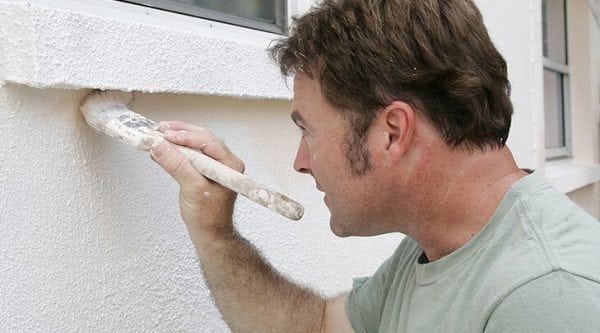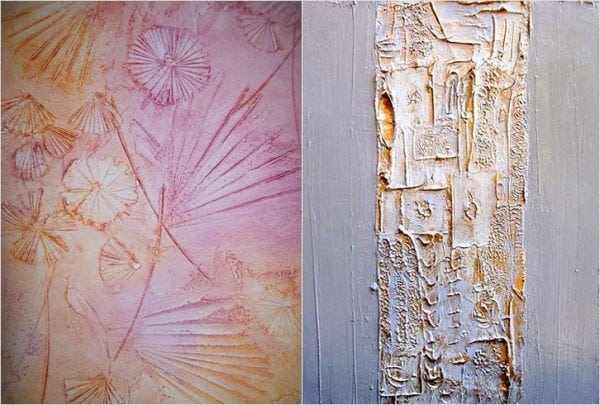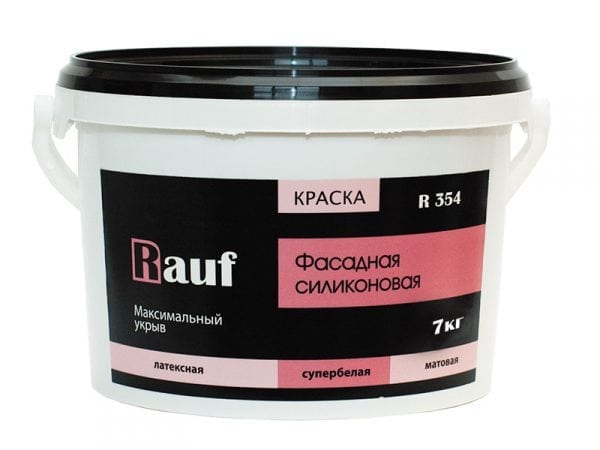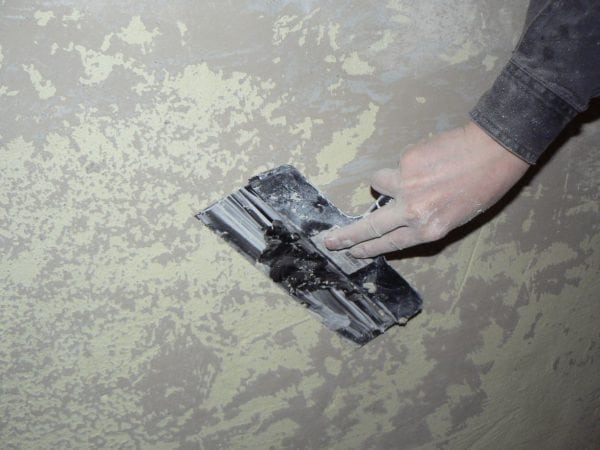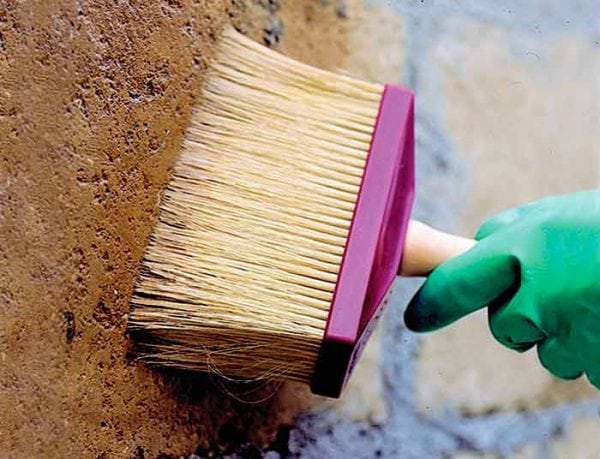The time comes when the facade or fence lose their original appearance and restoration work is required. But how to make the result of repair work more durable so that the walls, windows and doors look like new for a long time? Experienced craftsmen recommend using latex facade paint for this. But what is this paint and how to use it?
- Dye Features
- Benefits when using
- Material Features
- How to color
- Cleaning
- Impregnation
- Padding
- Dyeing
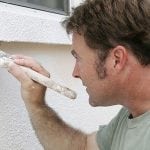
Dye Features
Before acquiring the recommended enamel, you should carefully familiarize yourself with all the characteristics of the coloring agent in order to take into account all the nuances during application to the surface.
Let's start with the composition. It includes:
- water, which is a non-toxic solvent;
- acrylic resins;
- latex liquid polymer.
It is the presence of latex polymer that gives acrylic enamel additional strength properties. But when buying material for painting, you should carefully read the instructions on the package, it should read "For outdoor work." This requirement is due to the fact that latex without special additives is weakly resistant to subzero temperatures.
In some coloring compositions, in addition to latex, there may be silicone, polyvinyl and other components that give the dye additional strength properties, the ability to withstand atmospheric phenomena.
In terms of quality, facade paints can be:
- Textured, allowing you to create embossed patterns (for facades are used infrequently, are more suitable for creating an internal design).
- Dense, able to hide surface irregularities. The use of dense compositions for painting uneven surfaces allows you to close small cracks and potholes on the base.
- Fluid, suitable for outdoor woodwork. For painting wood (window frames, doors or the entire structure) it is better to use specially designed means, this will improve the quality of the work performed.
In addition, latex gives acrylic paint a different gloss, which also must be considered when choosing a material for painting. Gloss can be:
- Full gloss when when dried, the latex film gives a shiny reflective surface. A building painted this way is very shiny. Full gloss is almost not used for coloring large areas, but doors or frames made of wood painted with a very glossy dye look very impressive.
- Semi glossy. The surface is moderately shiny and effectively shades under the sun.
- Semi-matte. Here, a beautiful matte shade has a low sheen.
- Matte. The painted base does not shine, allowing you to enjoy rich shades of color and emphasize the texture of the material. If you want to emphasize the beautiful wood pattern when painting the door, then a translucent latex paint composition will be the best solution.
Having dealt with all the features, you can pick up the necessary paint for outdoor work.
to contents ↑Benefits when using
The use of latex facade dyes for outdoor work allows you to get a number of advantages:
- Possibility of tinting. If you need to paint the building in different colors, then you should not buy all the necessary color palette.It is enough to purchase a white coloring composition and a set of tinting solutions. Color can also be added to change the original color, for example, if the acquired paint after drying does not give the desired shade.
- The speed of drying. Water, unlike other solvents, evaporates quickly, leaving a strong polymerized film of acrylic resins and latex after evaporation.
- Strength. The polymer film is very durable, easily resists the effects of wind and precipitation. It can be washed with detergents without risking damage to the polymer structure.
- Incombustibility. Using latex-based dye even without flame retardants significantly reduces wood combustibility.
- Non toxicity. It can be used not only for external, but also for internal work. For example, doors and window frames can be painted inside and out during repairs.
- Reliable protection. The polymer film prevents the penetration of moisture to the base, preventing rotting, the development of fungus or mold. In addition, the polymer does not allow harmful chemical compounds (automobile exhausts, emissions from enterprises), which with their aggressive chemical structure can contribute to the destruction of walls.
- Thermal insulation. The use of dyes with the addition of latex for outdoor work reduces the heat transfer of the building, while maintaining a healthy microclimate inside.
- Universality. In addition to special compositions for woodwork, most dyes are suitable for any materials, they can paint brick, metal or concrete. This property is very convenient in that, having tinted the composition to the desired color, they can simultaneously paint metal door, brick walls and wooden window frames.
- Profitability. Consumption depends on the structure of the base and the thickness of the paint, but on average it is 1 liter per 8 m2.
Material Features
Like any other coloring matter, latex solutions have a number of features that must be considered when you have to paint the facade:
- Do not use a pneumatic spray gun. It is better to use airless sprayers that give a jet ejection under high pressure.
- If a roller is chosen as the application tool, then it should have a low "fur coat" density and short pile.
- You can paint only in warm, dry weather, when precipitation is not expected. For complete polymerization, a day of good warm weather is needed.
- Be sure to apply a second layer. Despite the fact that the polymer sets quickly, re-staining is best done after 6-12 hours.
Given these features during the restoration of the building, you can get a beautiful long-term repair.
to contents ↑How to color
Restoration facade work with latex-containing dyes is carried out according to the same technology as work with other paints and varnishes. They include the following steps.
Cleaning
It is recommended to clean the walls of the building using a portable car wash. The high-pressure jet of water with detergent not only effectively removes dirt, but also removes the upper, peeling layer of the old decorative finish. If it is not possible to use a car wash, you can clean the walls of the old finish with a spatula. After drying, you can proceed to the next step.
to contents ↑Impregnation
Impregnation will provide additional protection against adverse factors. It is necessary to process not only walls, but also doors, and window openings.
If the door is made of metal, then before painting it is recommended to treat it with an anti-corrosion compound.
Impregnation of the door is recommended not only on the street side - the inside also needs protective treatment.
Padding
Latex-containing coloring agents, as indicated in the instructions, can be applied to the substrate without prior priming. But experienced craftsmen recommend not neglecting this stage, especially since the cost of soils is not very high, and the benefits of their use will be tangible.
The use of soil before painting increases the durability of the repair. After drying the soil mixture, you can start painting. It is important that the surface to be painted be dry: the presence of moisture will disrupt the polymerization process, and the resulting film will be of lower quality, will more quickly deteriorate under the influence of weather conditions.
to contents ↑Dyeing
You can paint the building with a roller or airless spray gun, and unpainted hard-to-reach spots are painted with a brush. It is important that the distribution of the solution is uniform when painting, without sagging.
Uneven staining will violate the properties of the decorative coating, making it less durable.
The second layer is applied after 6-12 hours. But it is recommended to wash the structure not earlier than in a month - the complete polymerization of the protective film occurs after this period of time. Early washing can disrupt the integrity of the polymer, it will allow moisture to pass to the base, which is why there is a risk of mold under the paint layer.
Facade restoration using latex-containing preparations is very convenient, because they are easy to use, non-toxic and provide beautiful long-term repairs. The main thing is to choose the right composition taking into account its decorative qualities and follow all the steps recommended when applying the dye.

